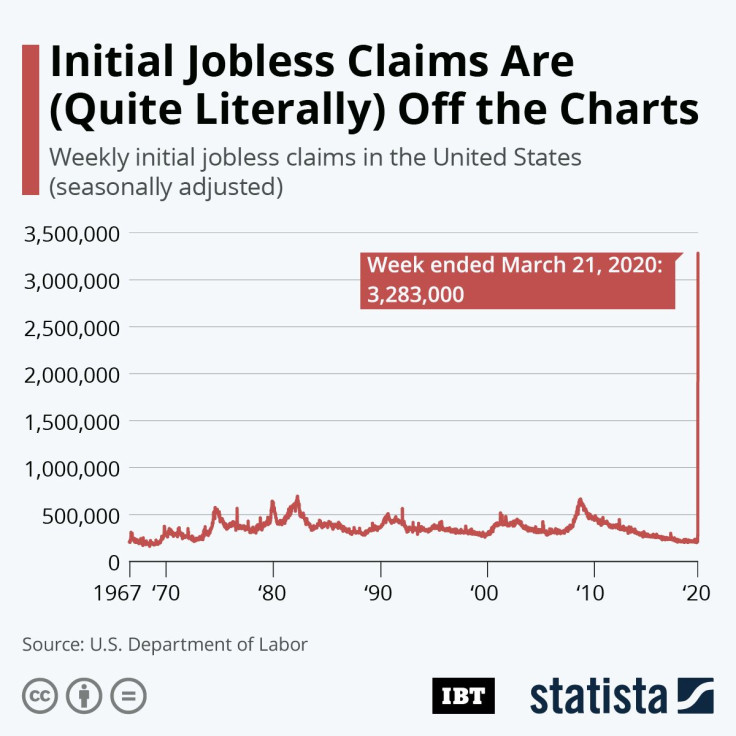Infographic: Initial Jobless Claims Are (Literally) Off the Charts

New U.S. labor market data released on Thursday revealed a massive increase in initial jobless claims for the week ended March 21. The U.S. Department of Labor reported that the number of Americans newly applying for unemployment benefits jumped to 3,283,000, a number quite literally off the charts when comparing it to historical figures. According to the DOL, previous peaks had occurred in the fall of 1982 and in March 2009, when initial claims had reached 695,000 and 665,000, respectively.
The rapid (albeit expected) rise in unemployment was driven by the measures taken to contain the COVID-19 epidemic in the United States, which has led to widespread closures of bars, restaurants and movie theaters as well as halting most travel, shocking the transport and hospitality industries to the core. "Nearly every state providing comments cited the COVID-19 virus impacts," the DOL wrote in its official press release. "States continued to cite services industries broadly, particularly accommodation and food services. Additional industries heavily cited for the increases included the health care and social assistance, arts, entertainment and recreation, transportation and warehousing, and manufacturing industries."
While today’s historic figures are certainly alarming, it’s difficult to compare the current situation with past crises. Never before have we seen such a sudden stop of economic activity, but while that results in extreme numbers like we’ve seen today, it may also enable a quicker recovery once the most extreme measures are lifted. While most epidemiologists deem those measures essential in managing the outbreak, critics argue that the damage inflicted on the economy could be worse than the threat posed by the disease itself. President Trump himself sympathizes with such concerns, having repeatedly warned that “we cannot let the cure be worse than the problem.”



















